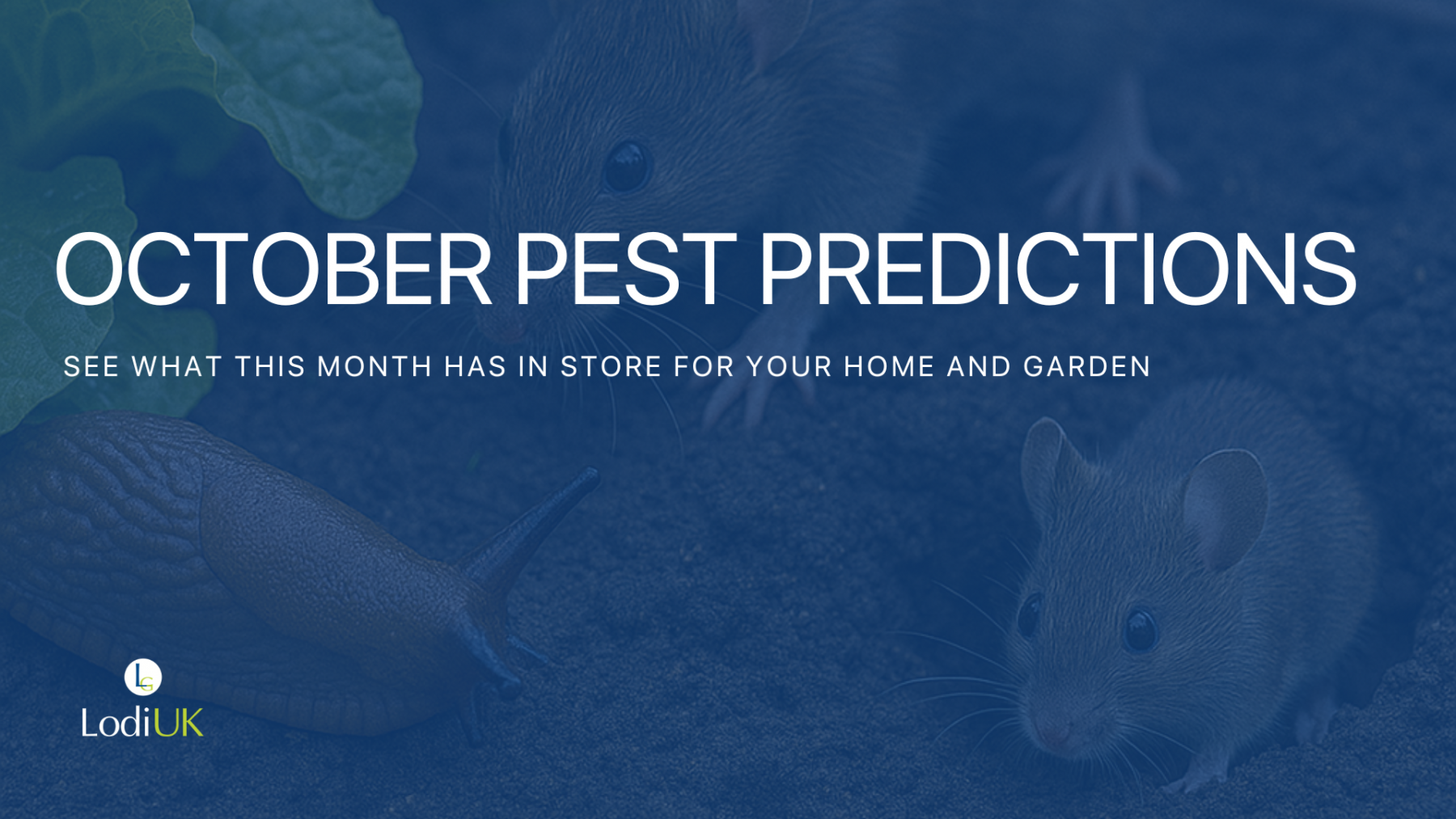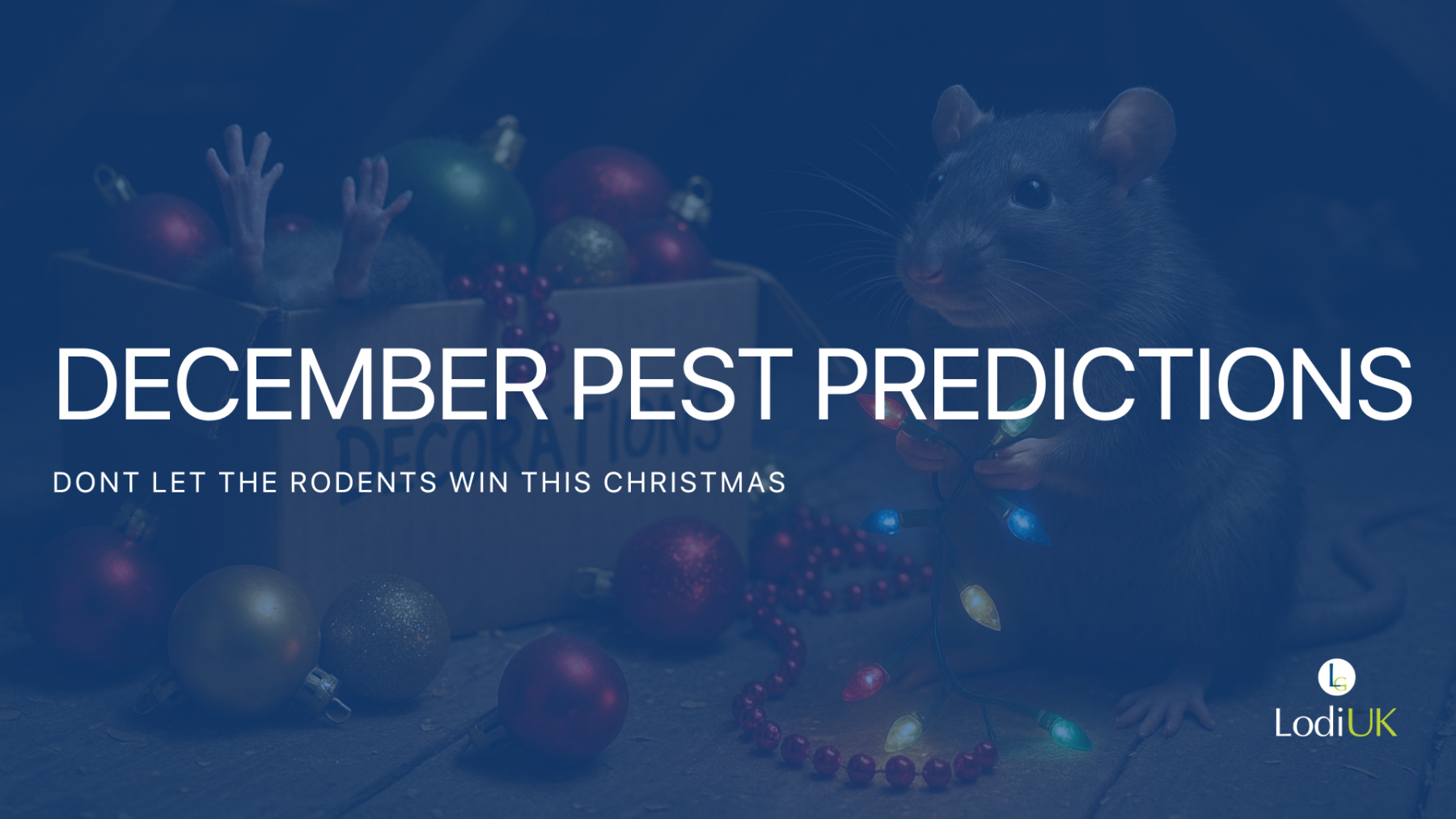
As the days grow shorter and the chill of autumn creeps in, the pest landscape begins to change. October is a transitional month, when some familiar summer pests start to disappear, while others take advantage of the cooler conditions to become even more active. For households and gardens across the UK, knowing which pests to look out for can make all the difference in staying one step ahead.
Wasps, Flies, and Ants on the Decline
During the height of summer, wasps are a constant nuisance at picnics, barbecues, and in gardens. By October, however, wasp colonies begin to collapse as the weather cools and food sources dwindle. Worker wasps that once busily supported the queen are left without purpose, and many die off naturally as temperatures drop. This is why you may notice fewer wasps buzzing around your food or drinks compared to previous months. It is not unusual to see the occasional stray wasp at this time of year, but their numbers are nothing like the swarms of July and August.
House flies and fruit flies also begin to fizzle out as autumn progresses. Warmer indoor environments may still attract them, particularly in kitchens and food storage areas, but their outdoor presence lessens as natural breeding grounds dry up.
Ants, another summer staple, also start to retreat. Colonies prepare for hibernation by sealing themselves deeper underground where they can stay warm and protected until the following spring. While you might spot the odd straggler indoors, for the most part ants are on their way out until next year.
Slugs Still Lurking
Although many insect pests slow down in October, slugs are far from finished. Damp and wet conditions are ideal for them, and this month often brings plenty of rainfall. Unlike insects that hibernate or die off in cold weather, slugs can remain active for as long as temperatures stay above freezing. This means your garden plants are still at risk of a late-night or early-morning slime raid. Whether it is young seedlings, leafy greens, or ornamental plants, slugs are opportunistic feeders that can cause significant damage if left unchecked.
Gardeners should remain vigilant, especially on wetter nights. Clearing away fallen leaves and debris that provide shelter and raising pots off the ground. Just because summer is over does not mean your plants are safe, so October is not the time to ease up on slug control.
Rodents on the Rise
While wasps, flies, and ants are in decline, October marks the beginning of peak season for rodents. Rats and mice thrive during this period, and understanding their lifecycle is key to knowing why they suddenly become so noticeable at this time of year.
Throughout the warmer months, rodents have had ideal conditions for breeding. Access to food is plentiful outdoors, and sheltered areas provide perfect nesting sites. A single female rat, for example, can produce multiple litters in just one year, with each litter containing up to a dozen young. By the time October arrives, many of those spring and summer litters are now fully grown adults, all competing for territory and resources. This is why activity in gardens, sheds, garages, and homes can suddenly spike.
As temperatures drop, rodents naturally seek out warmer spaces. Your home offers everything they need: food, shelter, and protection from the cold. Loft spaces, wall cavities, underfloor areas, and garages all make inviting nesting sites. Once inside, rodents can cause extensive damage. They gnaw on wood, wiring, and insulation, contaminate food stores, and leave droppings behind. Their presence can be distressing and unhygienic, particularly if they establish themselves in kitchens or living spaces.
How to Keep Rodents at Bay
Prevention is always better than cure when it comes to rodent control. Start by looking at your property from the outside. Gaps as small as a 5p coin can allow a mouse to squeeze through, so seal up cracks, holes, and gaps around doors, windows, and pipes. Check drainage, vents and air bricks, ensuring they are fitted with fine mesh, covers or blocking devices to keep rodents out while still allowing air and water to flow freely.
Food sources are another major attractant. Store pet food, bird seed, and household supplies in sturdy containers with secure lids rather than in bags or cardboard packaging. Outdoors, avoid leaving food waste or bins unsecured, and clear away fallen fruit or leftover feed that may tempt rodents into your garden. Compost heaps should also be managed carefully, as they provide both warmth and food scraps that attract rats.
Regular tidying can make a big difference too. Rodents prefer cluttered areas where they can move around unseen, so keeping sheds, garages, and outdoor spaces neat reduces potential hiding spots. Trimming back overgrown vegetation close to buildings also helps remove natural cover that could allow rodents to sneak in unnoticed.
When Prevention Is Not Enough
Even with the best prevention strategies, rodents can sometimes still find their way into homes and gardens. If you hear scratching sounds in walls or lofts, spot droppings, or notice gnaw marks on food packaging, it is time to take action.
For householders who want to tackle the problem themselves, amateur rodenticides are available to purchase. Lodi UK offers a range of solutions specifically designed for safe and effective use by non-professionals. These products provide an accessible way to control rodent populations when infestations occur, helping you regain peace of mind and protect your home. It is important to always follow instructions carefully when using rodenticides to ensure they are applied safely and effectively.
Staying Ahead This October
October is a month of change in the pest world. Some flying & crawling pests including wasps, flies, and ants are slowly disappearing as colder weather sets in, while slugs remain active enough to cause headaches for gardeners. Most significantly, rodents are entering the peak of their activity, having spent the summer breeding and now seeking warmth and shelter indoors.
By staying alert, taking preventative steps, and knowing when to bring in control products, you can stay ahead of the pests that matter most this season. Autumn may bring a welcome break from some summer nuisances, but it also ushers in new challenges that require just as much attention.





